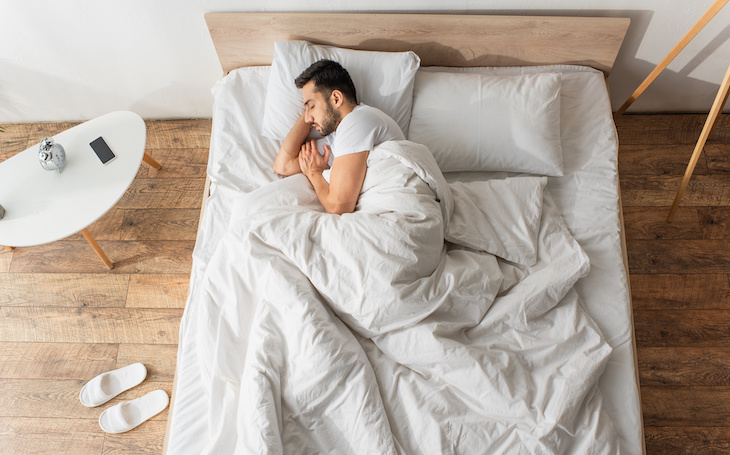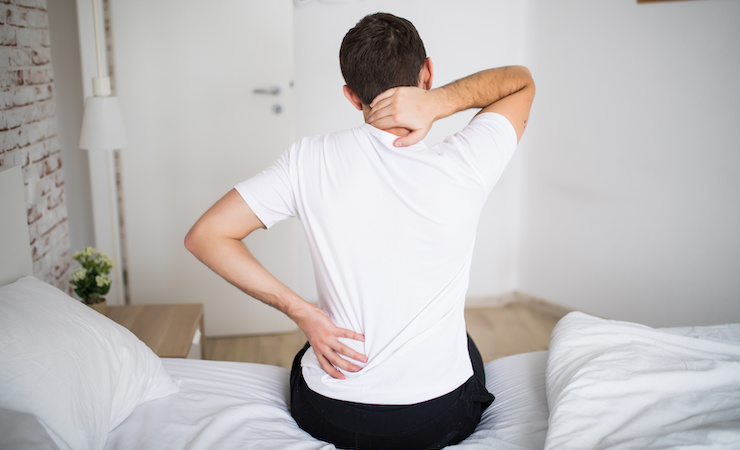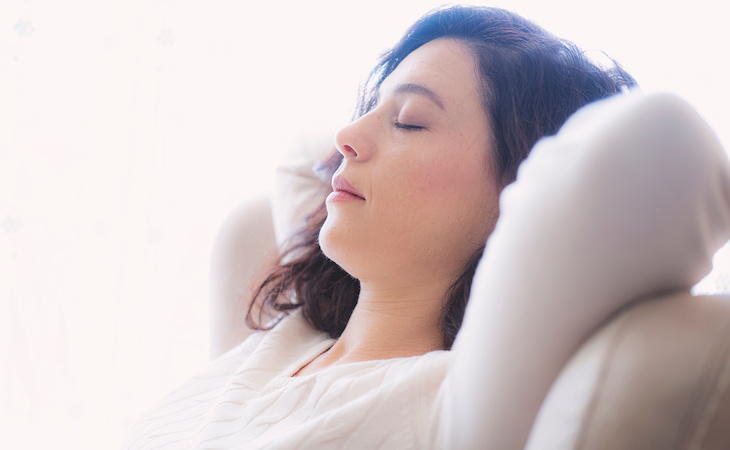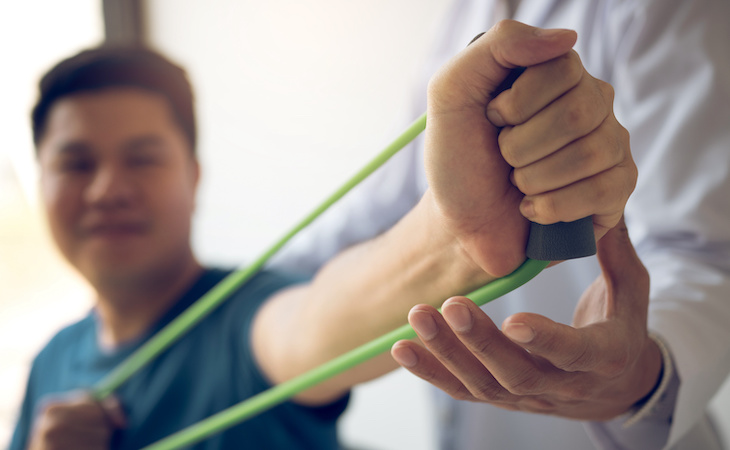We all want to wake up refreshed, rejuvenated, and ready to take on the day—but sometimes we wake up stiff, fatigued, and not feeling our best.
It would make sense that our sleeping posture has the power to either enhance our life enjoyment or may be contributing to the breakdown of our bodies as we age.
So, the ultimate question is: “What’s the best sleep posture—and how can you achieve it?” As a physical therapist and the clinical director of FYZICAL Therapy & Balance Centers Whitney Ranch, I’m here to share some of my best strategies to help improve your sleep posture so you can wake up ready to take on the day without pain.
The neck: one or two pillows?
You may already know that a healthy spine has a natural curvature to it. Promoting this curve during daily sitting and standing can be key to a lifetime of back health and improved pain levels. This curvature should also be considered while sleeping.
A common question I get when treating patients with neck pain is, “How many pillows should I be sleeping with?” The answer to this question depends on what type of sleeper you are: a back sleeper, aka “supine,” or a side sleeper.
Disclaimer: Sleeping on your stomach, or “prone,” is a position that I don’t typically recommend. (It is, however, a recommended sleeping position at times for patients with chronic obstructive pulmonary disease, aka COPD.)
This position isn’t very kind to the spine as it promotes the straightening of the natural curve. It may be a hard habit to break but changing to either supine or side sleeping may provide you with many health benefits!
Regardless of the position you prefer, the key to remember is that the neck should always be maintained in a neutral position. This can usually be achieved by using one pillow when sleeping supine and two pillows when side sleeping.
This ensures proper maintenance of the natural curve. Incorrect sleeping postures can and will become very debilitating to one’s health over time. Below is what not to do:

The low back: getting comfortable
In any position of sleep, you may find that your low back wakes you up in the middle of the night or you just can’t get comfortable due to tightness or stiffness. If this is you, then there are some easy strategies to improve low back comfort at night.

Supine sleepers (left) can benefit from their knees bent and elevated by a few pillows, usually no more than four to six inches. This can help unload the low back and decrease feelings of pressure and stiffness. Also, note that there’s only one pillow under the neck.
Side sleepers (right) will benefit from a pillow placed in between their knees. This maintains alignment of the hips, thus reducing low back discomfort or tightness. This position calls for two pillows under the neck to maintain neutral neck positioning.
Getting out of bed in the morning
After a restful night of sleep, the way you get out of bed plays a large role in your spine health. You’ve just spent all night recovering and unloading your spine from a day with gravity and are getting ready to re-introduce your body to the daily forces it’ll encounter.
Jumping out of bed like an 8-year-old on Saturday morning is usually not the best idea! To avoid increases in muscular stiffness, straining a muscle, and even potential sudden drops in blood pressure in some people, a proper wake-up routine should involve a warm-up phase and a safe transfer.
This concept is often met with reluctance, with people saying, “There’s not enough time in the mornings.” If this seems like a lot of work, then ask yourself some simple questions:
- If a couple of minutes every morning could allow you to live your entire life doing all the activities you enjoy with vigor and strength, would it be worth it?
- What if you couldn’t do these activities you enjoy due to pain and disability? Would investing a couple of minutes per day in hopes of changing the outcome really seem like that much?
When we do the little things well each day, we can experience great improvements in our life enjoyment. Consider the warm-up exercises provided below: the pelvic tilt and low trunk rotation.

Pelvic tilt
Lie flat on your back with your knees bent. Draw your navel down toward your spine while tilting your pelvis towards you in an attempt to flatten your spine against the ground/bed. Perform three sets of 10 repetitions, holding each tilt for three seconds.
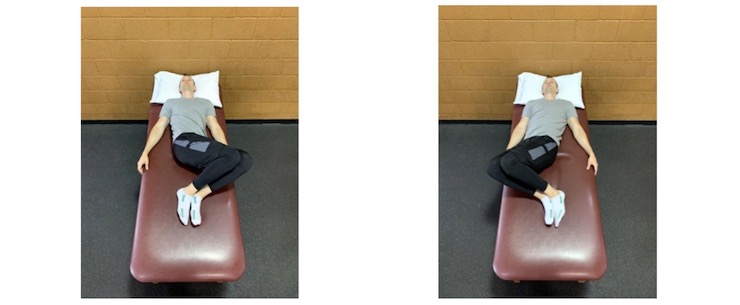
Low trunk rotation
Lie flat on your back with your knees bent. Draw your navel down toward your spine and gently rock your knees side to side, keeping your upper back flat on the bed/ground. Perform three sets of 10 repetitions.
The safe transfer is shown below. Getting out of bed in this fashion is a habit that allows your spine to accept gravity in a supported and gradual manner and a way to thank your spine for all that it does for you daily. Roll onto your side and push off with your arms as you swing over. Remember to keep breathing throughout these movements!
Step 1: Roll on side
Step 2: Push off with arms as legs swing over

Key takeaways
- Sleeping is a period of recovery for our spines from the daily effects of gravity and various loads our bodies encounter.
- Just as it’s important to promote the spine’s “natural curve” when sitting or standing, it’s equally important to consider the curve while sleeping. There are key techniques that can support the neck and low back during sleep, regardless of your preferred sleeping position.
- Getting out of bed in the morning properly is an important activity for the spine and must become a habit!
References
- Armstrong B, Mcnair P, Taylor D. Head and neck position sense. Sports Med. 2008; 38(2): 101-17.
- Dingle M. Role of dangling when moving from supine to standing position. Br J Nurs. 2003; 12(6): 346-50.
- Figueroa JJ, Basford JR, Low PA. Preventing and treating orthostatic hypotension: As easy as A, B, C. Cleve Clin J Med. 2010 May; 77(5): 298-306.
- Hansraj KK, Assessment of stresses in the cervical spine caused by posture and position of the head. Surg Technol Int. 2014 Nov; 25:277-9.
- Magee, DJ (2002). Orthopedic physical assessment. (4th ed.). Philadelphia: Saunders.
- Pajuheshfar J. Posture Perfect: Your Guide to Defying Gravity. 2020: 24-28.

